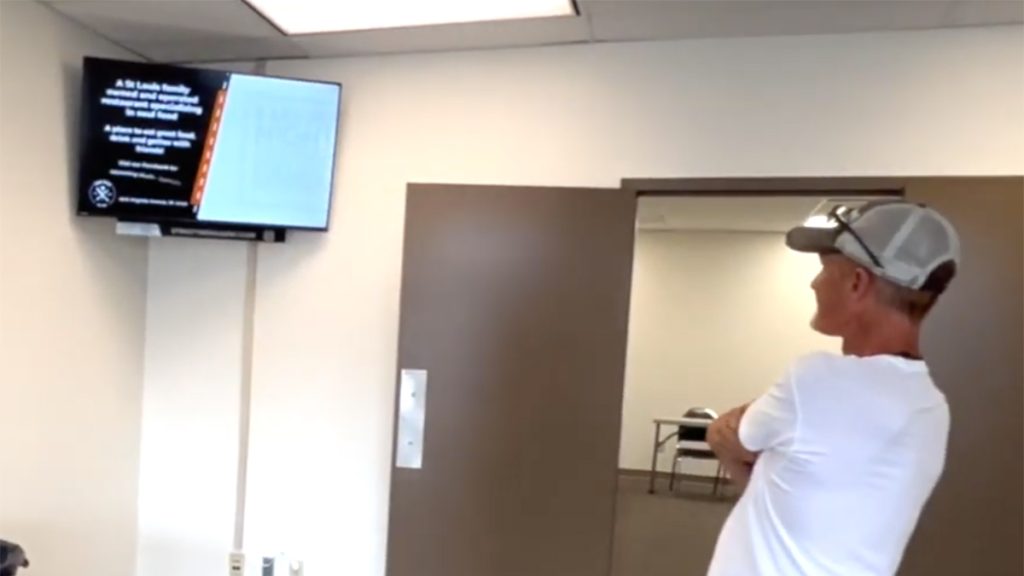
An experiment in using digital screens for news and advertising is gaining traction
A pilot project — sponsored by the Reynolds Journalism Institute — to help news organizations serving under-represented communities is picking up steam and expanding from its roots in the Midwest.
Building off an initial network in Minneapolis, the initiative, called the Dynasty Interactive Screen Community (DISC), launched in St. Louis in June and has now expanded to Atlanta, boasting more than 100 digital screens that carry news and advertising throughout the city. That makes it the largest market for this fast-growing network that didn’t even exist until 2023.
DISC places digital community news and advertising on screens in community staples like restaurants, salons and malls with the hope of growing its audience by attracting viewers who aren’t subscribers.
“Our goal is to build audience — to make these publications relevant and help them be the true voice of their communities,” said David Beckford, founder of the Washington, D.C.-based consulting firm Dynasty Media.
While digital screens showcasing content and advertising have been around for years, Beckford’s new twist of offering targeted, and most importantly, local content and advertising is adding an attractive element to the strategy.
Beckford believes the model is particularly useful as a means to give Black and minority media organizations access to the level of audience exposure that more traditional distribution and funding models increasingly fail to support.
You know, a little pizzeria is not going to be in Sauce Magazine or the St. Louis Post-Dispatch very often unless they have a significant advertising budget. But on our 50 social media pages and on our screens reaching 300,000 people, that pizzeria will be there every day.
David Beckford
The ongoing expansion in Atlanta is quickly demonstrating the scalability of that approach. The 28 screens now featured at Plaza Fiesta — an expansive mall and farmer’s market serving Atlanta’s vibrant Latino community — add to a network that now reaches 1.4 million people per month in the city. This is in addition to 80 screens in Minneapolis-St. Paul reaching, Black, Hispanic, Somali and Native American communities.
According to Beckford, part of the success of the digital screen concept comes down to the positive and diverse community engagement it fosters among both consumers and business owners.
“A city is big enough for many voices; those voices make us who we are and help move us forward,” Beckford said. “But we’re not berating anybody — that’s not what we’re for. I don’t want to go eat and see who got killed today. It’s our best foot forward, the best of St. Louis or Atlanta or Minneapolis-St. Paul.”
The hope, he said, is that the screen networks not only boost exposure for local news organizations in these cities but also create a stronger local, multicultural ecosystem of reporting and advertising in a globalized digital world.
Indeed, whereas news organizations and other businesses usually have to pay for advertising and distribution that is meant to drive people to them, DISC focuses on meeting people where they are by utilizing existing community resources, such as restaurants and other public gathering places that already have a steady supply of audiences.
The result, Beckford said, is a more level — and more collaborative — playing field that better represents the value these organizations bring to their communities.
“You know, a little pizzeria is not going to be in Sauce Magazine or the St. Louis Post-Dispatch very often unless they have a significant advertising budget,” Beckford said. “But on our 50 social media pages and on our screens reaching 300,000 people, that pizzeria will be there every day. The same is true for a newspaper that has a small circulation. They work together.”
In line with RJI’s mission of building a more robust local news infrastructure throughout the country, DISC plans to continue expanding, both in its existing markets and in additional locations across the U.S.

Comments